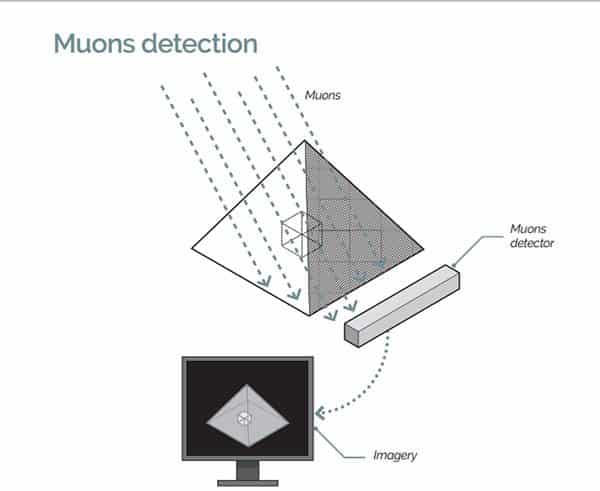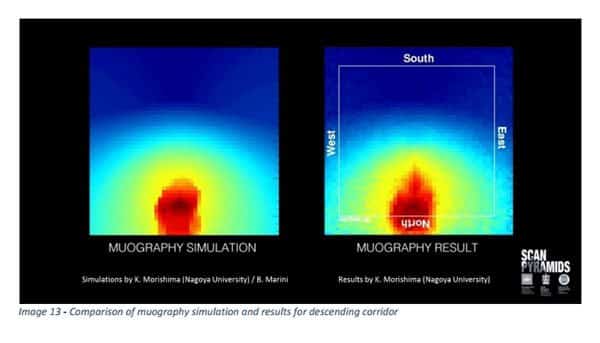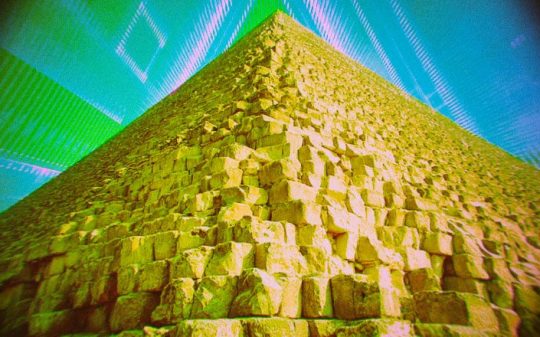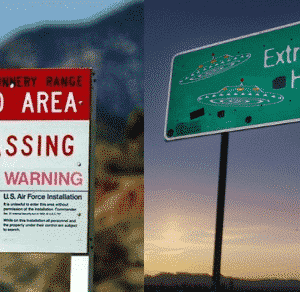Project ScanPyramids has just discovered evidence of two previously undetected apertures inside the Great Pyramid of Giza.
Just because a mystery is 4500 years old doesn’t mean it can’t be solved…”
This isn’t Project ScanPyramids’ motto but it falls neatly along the line revealed by this recent discovery. As its name implies, the project aims to offer valuable data about the enigmatic architectural wonders of the ancient Egyptians. The project, which is carried out by a team of researchers from the Cairo University and French non-profit organization Heritage, Innovation and Preservation (HIP) employs the latest in scan technology to dig for ancient secrets.
“Four millennia after their construction, these ancient giants are far from having yielded their secrets. The first mystery concerns their construction, especially Khufu, the last of the Seven Wonders of the Ancient World still existing: it is still impossible to describe with certainty how this stone monument, the largest ever built by humans, was erected.”
Last summer, the researchers began their most ambitious venture ever: a comprehensive scan of the Great Pyramid using muography, an innovative method that uses muons, elementary particles that are formed when cosmic rays interact with particles in the Earth’s upper atmosphere.

The team placed muon detectors at key places inside and around the pyramid and, with time, these particles accumulated, allowing researchers to differentiate between empty areas (muons passed through them unhindered) from dense areas where muons were absorbed or deflected. Their findings were presented in a recent announcement.
This allowed them to detect the presence of two anomalies, two previously-undiscovered voids inside the Great Pyramid. One is located on the northern face of the Khufu Pyramid, about 350 feet above ground level. Its precise shape, size and exact location are currently under investigation but the team suspect the void might be comprised of at least one corridor going inside the pyramid.
The second anomaly was discovered on the North East edge of Khufu’s Pyramid, above the entrance gate. Researchers believe it to be a small cavity that has managed to remain undiscovered for nearly 5,000 years. The researchers are currently analyzing the data they gathered in the hopes of discovering even more hidden rooms.

This recent exploration is sure to ignite a new wave of flaming guesswork about what was it the ancient Egyptians tried so hard to keep covered. Suppositions range from ancient UFO mother ships, to incredible, long-lost underground cities, to entrances to Inner Earth, to zero-point energy generators, to a physical doorway into the Akashic Records et cetera.
The fact of the matter is: nobody knows. Correction: nobody willing to talk and enlighten us knows. Mankind’s fascination with pyramids goes back to before the Great Pyramid of Giza was even built. It is a shape with so many associated esoteric meanings that it shows up in arcane texts as old as the world. It makes sense that the world’s most famous pyramid is hiding a secret as large as itself. But not everyone shares these enthusiastic views.
Regarding the ScanPyramids project, former Egyptian Minister of Antiquities Zahi Hawass had this to say:
“These people are scientists and do not have an archaeological background. The core of the pyramid was built using long stones and small stones. If you know that, you’ll find anomalies everywhere. I think there are no secret rooms and these anomalies have to do with the way the pyramid was built.”
Leave it to the officials to try and conform any recent finding to reason. Perhaps Hawass knows something we shouldn’t and he’s trying to calm the waves.
The good news is that, spurred on by their success, the ScanPyramids team have extended their project for another year. We anxiously await their findings.









